What are Number Bonds?
“Number bonds” is a term for components of numbers or number pairs shown pictorially. Students should be able to recall number pairs for all numbers up to 10 as this will greatly help with mental calculations. The number bonds for 3, 4, 5, 6, 7, 8, and 9 are shown below using cuisenaire rods.
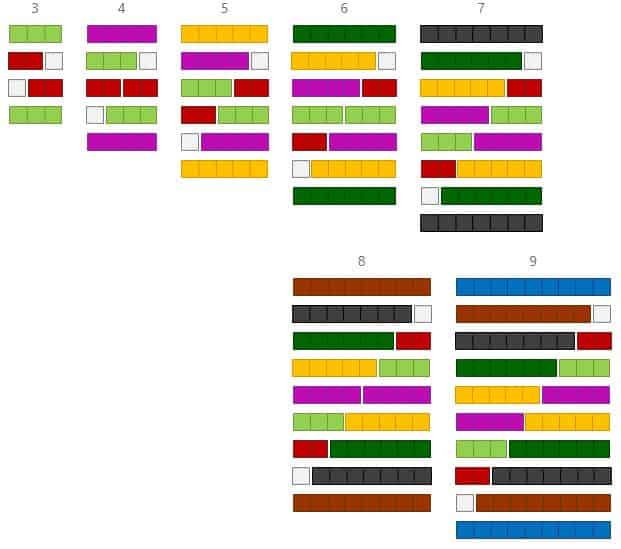
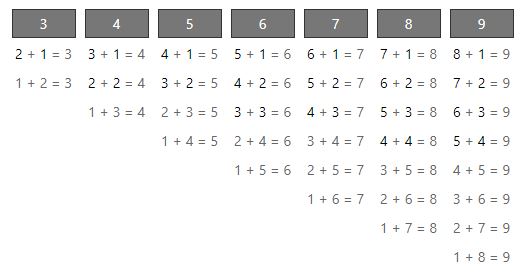
Commutative Law
Ensure your children are familiar with the commutative law for addition. They do not need to know actual name of this law but they must be able to use it. In other words, they if they find that 4 + 2 = 6 then they should know that 2 + 4 = 6. This law allows the 35 number pairs above to be reduced to only 19 that need to be quickly recalled.
History of Number Bonds
Number bonds is not a new term in mathematics education. It was introduced way back 1920 and was popularized by the Singapore Mathematics curriculum in the early 1970s.
How do Number Bonds work?
Number bonds are basically represented by circles connected by lines. The “whole” is written in the first circle, while the “parts” are in the attached circles.
THE INVERSE RELATIONSHIP
Inverse relationship occurs in number bonds since it uses both addition and subtraction. Addition and subtraction are both examples of inverse operations. The inverse relationship in number bonds is shown in the figure below.
Given a number bond of 3 as shown in the figure below,

the inverse relationship that exists in the number bond is shown below.
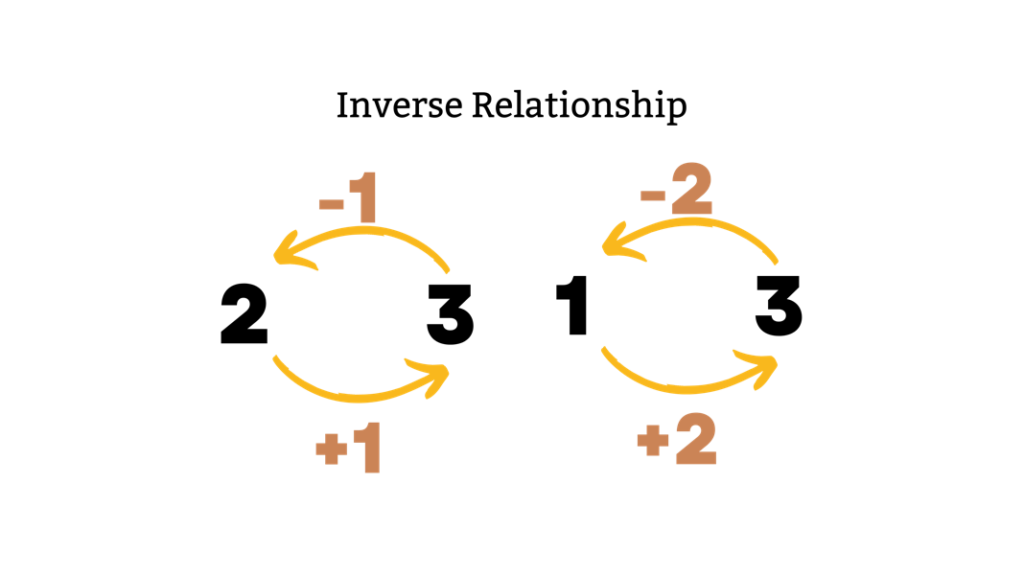
NUMBER BONDS IN SINGLE DIGIT NUMBERS
Say for example the number bonds in number 6. The figures below show some of the possible number bonds there is a single-digit 6.

In Figure 1, we can clearly see that 3 and 3 can be parts of 6 to make it a whole.
Figure 2 shows that 2 and 4 can also be parts of 6. And lastly, 1 and 5 make 6.
EXAMPLE #1
Can you show two possible ways to put the 4 mangoes on the plate?
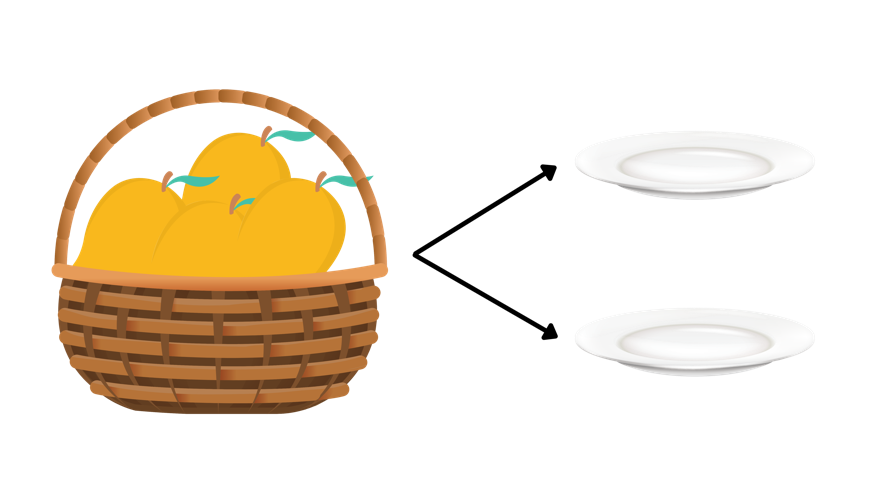
SOLUTION
The first possible way to put 4 mangoes in 2 plates is shown below.
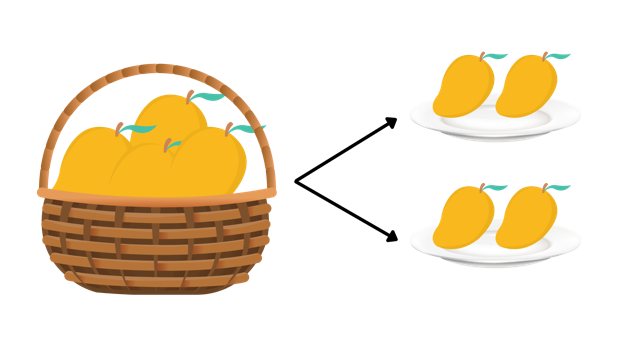
The second possible way is to put 3 mangoes on 1 plate, and the remaining 1 mango on the other plate.
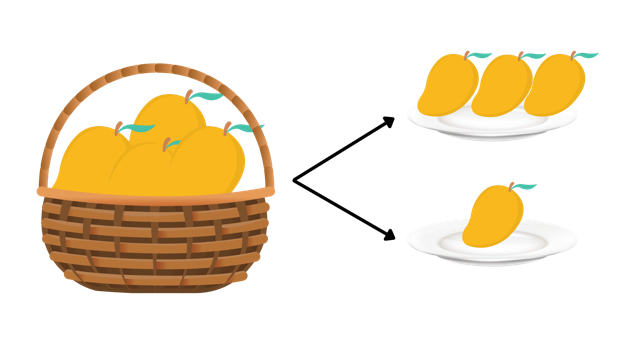
EXAMPLE #2
What number should we put in the circle to make it true?

SOLUTION
To determine the whole part of the number bond, simply add the two parts given. Thus, 5 + 2 = 7.
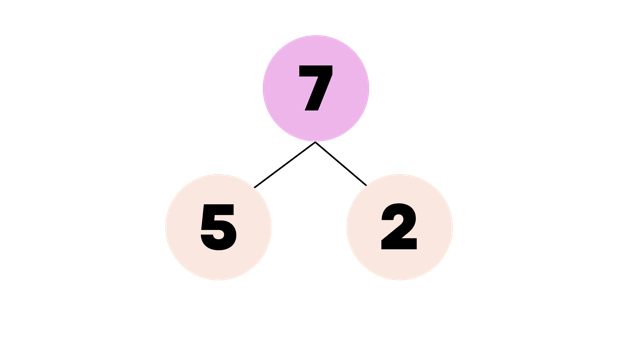
Therefore, when 5 and 2 are combined, they will make up 7.
EXAMPLE #3
How many possible number bonds are there in 9?
SOLUTION
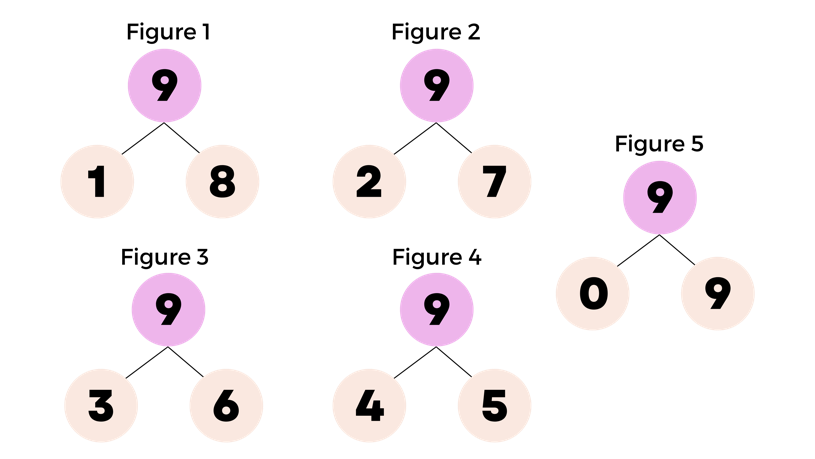
The figure above shows the possible number bonds there are in 9. Therefore, there are 5 possible number bonds in 9.
EXAMPLE #4
What will make the number bond below true?
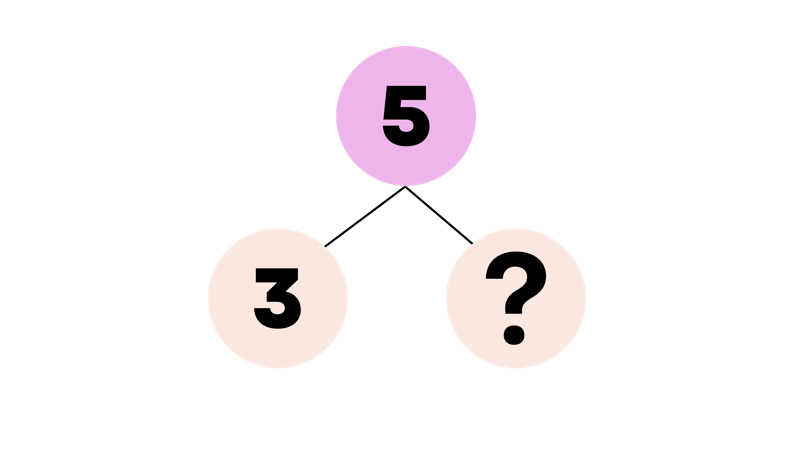
SOLUTION
To determine the missing part of the number bond, the figure already shows that 5 is the whole and 3 is one of its parts. Hence, we can determine the missing part by subtracting 3 from 5. Thus, 5 – 3 = 2.

Therefore, 2 is the missing part.
NUMBER BONDS USING MULTIPLES OF 5 OR 10
One of the most important uses of number bonds is relating it the multiples of 5 or 10 especially when it comes to addition. So here are examples of number bonds in relation to multiples of 5 and 10.
Say for example, we have a 28 as a whole number, we can break its part to either 25 + 3 = 28 or 20 + 8 = 28. Visually, we can represent it as:

IMPORTANCE OF NUMBER BONDS IN ADDITION OF TWO NUMBERS
Number bonds make it easier to mentally add two numbers. When one master the concept of number bonds, it will be easier for them to do mental calculations.
EXAMPLE #1
Using number bonds, how will you show the sum of 7 and 5?
SOLUTION
One easy way to show the sum of 7 and 5 using number bonds is to break down 5 to 3 and 2. Thus,

Then, 7 and 3 make a multiple of 10 wherein it will be easier to add the numbers.

Therefore, 7 and 5 are parts of 12.
EXAMPLE #2
What will be the sum of 48 and 15?
SOLUTION
Using number bonds, one way to get the sum of 48 and 15 is to break down 15 to 2 and 13.

Then, combining 48 and 2 will yield 50. Making it easier to add the two numbers. Thus,

Therefore, 63 is the sum of 48 and 15.
EXAMPLE #3
What is the sum of 83 and 27?
SOLUTION
One way to solve this is to break the numbers in relation to multiples of 10. Hence, we can have 83 as 80 and 3, and 27 as 20 and 7. To make it clearer, observe the figure below:
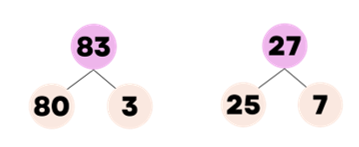
Relating it to addition, it will follow that:

Then, we now have multiples of 10 that will be easier to add and parts of 10. Thus,

Therefore, using number bonds, 83 + 27 = 110.
EXAMPLE #4
Find the sum of 1 + 2 + 3 + 4 + 5 + 6 + 7 + 8 + 9 + 10?
SOLUTION
The easiest way to find the sum of numbers from 1 to 10 is by making number bonds that will make multiples of 10. Thus, we will have:

Looking at the number bonds above, we were able to make 4 bonds of 10 and we still have remaining 5 and 10. Hence, we can simply add this as:
10 + 10 + 10 + 10 + 5 + 10 = 55
Therefore, the sum of numbers from 1 to 10 is 55.
RELATING NUMBER BONDS AND TIME
Number bonds can also help you in adding measures of time.
Say, for example, if you have a given time of 2:30 pm and you need to add 50 minutes to it, we can use the number bonds to determine the exact time if 50 minutes is added to 2:30 pm.

The reason why 50 minutes was split into 30 and 20 is because in order to have a complete hour it should be 60 minutes. Since we have 2:30 pm, the other pair of 30 will make sense in making it a whole hour. Thus,

Then, given that there are 60 minutes in an hour,

Therefore, adding 50 minutes to 2:30 pm will result in 3:20 pm.
EXAMPLE
Mathilda woke up at exactly 4:45 am. It will take her 30 minutes to prepare for school. What will be the exact time that she will be ready to go to school?
SOLUTION
First, determine how many minutes it will take to complete an hour. Since we have 4:45 am as the given time, it means we only need 15 minutes to make 1 hour. Thus, by creating number bonds,

Then, combine 4:45 am and 15 minutes to create a whole hour.

Lastly, adding 15 minutes to 4:45 am will result in 5 am.

Therefore, Mathilda will be ready to go to school at exactly 5:15 am.
Recommended Worksheets
Multiplication of Numbers Using Number Bonds and Fact Families (Chinese New Year Themed) Worksheets
Division of Numbers Using Number Bonds and Fact Families (4th of July Themed) Worksheets









